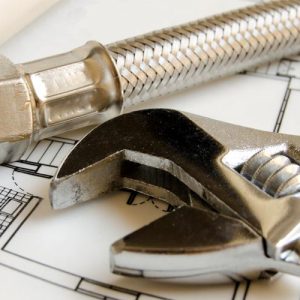
When your boiler is not firing up, or your boiler is leaking can be distressing, especially when it’s freezing outside on a cold winter’s day.
It is possible to repair your boiler without having to rely on an engineer to come to you. There are certain problems with your boiler that you can fix yourself.
Here, you will find some simple and easy boiler repairs that you can do without having to go inside the boiler itself.
How to Fix a Boiler
Having the ability to fix a boiler can save you from experiencing the dreaded problem of no heating or hot water and can save money by not relying on and waiting for the gas engineer to come and fix it.
Here are 6 of the more common boiler problems that you can fix yourself.
- Low boiler pressure
- No power supply
- Thermostat problem
- Radiators need bleeding
- No gas supply
- Frozen boiler condensate pipe
Low boiler pressure is a simple and quick boiler repair that is needed and can be done easily by you. Low boiler pressure will cause your boiler to stop working and you will need to re pressurise the boiler. The pressure gauge will show if your pressure is low
Some heating systems are gravity-fed and will have a small tank in the loft. If your heating system is gravity-fed then the problem is not pressure because your system is not a pressurised system.
How to Fix Low Boiler Pressure
To fix a low boiler pressure, you first need to find the boiler pressure gauge. Normally, you would find the pressure gauge on the boiler.
Once the gauge is located, check the pressure is between 1 and 1.5 bar. If the pressure is less than 1 bar, you will need to raise the pressure by using the boiler filling loop and then resetting the boiler.
Top The Pressure Up
The filling loop will can be located and the bottom and underneath the boiler with the pipework or maybe in the hot water cylinder cupboard.
The filling loop is identified normally by two black levers or handles that have to be opened manually. Once the filling loop is open and the correct pressure is showing on the gauge the handles can be shut.
Topping up the low pressure on the boiler is a quick and easy tip for anyone to learn so that you can fix a low-pressure boiler yourself without the need of assistance from a gas engineer.
If the boiler continues to lose pressure regularly, then the boiler may have a leak, an expansion vessel problem, or a problem with the pressure relief valve you will need a gas safe engineer to come and fix the leak.
No Power Supply
If you cannot see lights or any signs of life in your boiler, it could be an electrical problem, so check to see that electrical power is getting to the boiler.
Check The Fused Spur
If you are not getting power to the boiler, check the switch and the fuse in the fused spur switch which is usually found next to the boiler.
Sometimes the switch can get switched off accidentally and fixing the problem could be as easy as flicking the switch back on.
If it’s the fuse that has blown in the spur, replace the fuse with a 3a
Check The Fuse Board
If all seems okay at the fuse spur and the fuse has not blown try checking your fuse board to ensure the something else has not tripped your heating circuit.
The fuse board is where you will find all fuses and circuit breakers and it is where all the property electrical circuits are controlled. Check the boilers fuse and if it’s turned off switch it back on. If you have to repeatedly turn this switch back on then you will need an electrician to check it out why it keeps happening.
Thermostat Problems
Check the Thermostat
The room thermostat will turn the boiler off when the room temperature reaches the temperature that it is set at.
For example. If the thermostat is set at 15 degrees and the room temperature is 16 degrees, the boiler will not fire up and come on.
A quick fix could be to try turning the thermostat up and see if that will fire up the boiler.
Just the simple act of turning up the thermostat could save you from paying an additional call out fee for a boiler engineer who will come and test the thermostat first.
Are The Batteries Dead?
As wireless thermostats and programmers are powered by batteries, it’s always a good idea to check the batteries when having problems with your boiler.
Many gas engineers have been called out to a boiler not working because the customer did not know their thermostat was wireless and needed batteries.
Just open up the thermostat and replace batteries which are usually AA or AAA batteries.
If you have a Smart thermostat like Hive, you will receive an email you when your batteries are running low so you can be prepared and not need to worry about batteries on your Smart thermostat running out.
Radiators Need Bleeding
Learning to bleed the air out of radiators is an important but simple DIY boiler repair skill to learn and which can enable you to fix your boiler issues.
Bleeding a radiator is simple and easy to do, all you need is a radiator bleed key to get started.
Why Bleed a Radiator
A radiator needs bleeding when there is an airlock in the heating system which is preventing your boiler from working properly. Or, the boiler is working, but the radiators are cold and not getting hot because there isn’t any water in them. With this problem, check radiators for air by bleeding the radiator bleed valve with a radiator bleed key.
You should check all of your radiators for air by bleeding them at the radiator bleed valve with a bleed key.
If you don’t have a Combi boiler you might need to bleed air from the vent of the hot water cylinder cupboard. For this job you might need some water pump pliers.
Re pressurise after Bleeding Radiators
When you bleed air out of the radiators, pressure is released from the heating system. This means you will have to top up the pressure by using the filling loop.
No Gas Supply
Check the Emergency Control Valve (ECV)
The ECV is the handle situated on the steel pipe next to the gas meter. Gas meters are sometimes located indoors in cupboards or under the stairs. In these situations the handle can accidentality be knocked off. If you have no gas supply check this handle first to make sure the handle is inline with the pipe. Check this is turned on by making sure the handle is in line with the pipe.
There should also be some yellow tape telling you which way is on and off, so check to make sure it’s on correctly.
Prepayment Gas Meters
For those with a pay-as-you-go gas meter card or a key that puts money on your meter, check that it has money on it.
Remember, if you let the meter completely run out of money, it can be harder to get the gas flowing again and if this happens, you might need to call the gas supplier to remedy this problem.
Gas Supply Problems
- Baxi E133 gas supply fault
- Vaillant F54 gas supply fault
- Vaillant F28 gas supply fault
Frozen Boiler Condensate Pipe
If it’s really cold outside and the boiler is not working as it should, it could be the result of a frozen boiler condensate pipe.
In order to fix this problem you will have to thaw out the frozen pipe by applying warm water to the pipe to unfreeze and then reset the boiler.
Hopefully these DIY boiler repair tips will enable you to fix your boiler yourself. These checks are usually included in a boiler service but now you can do these simple checks yourself.
If you can’t fix your problem then it might be time to contact a Gas Safe Registered boiler engineer to come and diagnose and fix the issue you are having.
If you need boiler repairs or any other boiler services then contact our team at ProTecBoilers today – 01924 731 838


